This June, visitors to UC San Diego’s Scripps Institution of Oceanography will find a new flag waving on campus. More than just a colorful piece of decor, the Progress Pride flag now flying high in front of the Eckart Building at the center of campus is the symbol of lesbian, gay, bisexual, transgender and queer pride, and related social movements that celebrate the diversity of the LGBTQ+ community and call for a more inclusive society.
The Progress Pride flag was raised at Scripps Oceanography on June 1 in recognition of Pride Month 2022. This month-long celebration of the LGBTQ+ community originated as a way to honor the one-year anniversary of the Stonewall riots of late June 1969, when anti-gay police raids turned violent at the Stonewall Inn in Manhattan and members of the queer community fought back. This uprising lasted several days, and is now seen as a tipping point for the gay liberation movement.
Building on that spirit of resistance, the first Pride marches took place in 1970 in New York City, Chicago, Los Angeles, and San Francisco. These celebrations have evolved over the years, expanding to cities around the globe with a wide variety of parades, programming, and other festivities that honor the contributions of queer people on the nation and world.
While progress has been made in the United States to help protect LGBTQ+ individuals in recent decades, many community members still face discrimination and state legislatures are actively working on advancing bills that target transgender people and LGBTQ+ rights. And within the scientific community and geosciences, there is still much work to be done to increase queer representation and inclusion.
Scripps Oceanography stands in solidarity and support of our queer community and is committed to creating a safe space where diversity can thrive. Queer-identifying students, staff, postdocs, researchers, faculty and alumni at Scripps are invited to join Queer@Scripps, a group that meets monthly on campus. Learn how you can be in community with this group by visiting the Queer@Scripps webpage or emailing leadership at leadership-queer-sio@ucsd.edu.
Another great resource on campus is the UC San Diego LGBT Resource Center, a diverse, open and public space for all members of the university community to explore issues relating to sexual and gender identities, practices and politics. The center is organizing a UC San Diego contingent to participate in the San Diego Pride Parade on July 16, 2022. Register here to get involved.
In celebration of Pride Month 2022, we are spotlighting several members of the queer community at Scripps including students, faculty, staff and researchers. Learn about their contributions to science and academia, what this month means to them, advice on discovering your identity, and more in the Q&A below.
Pooja Balaji, MS Student in Marine Biology, They/Them/Theirs
How do you identify? How has your identity informed or impacted your career?
I identify as nonbinary and queer—the way my sexuality and gender identity look is extremely fluid and even though I “came out” to myself when I was very young, I still sometimes have questions about the exact shape of my identity, and it continues to be a journey to see what fits me best.
My family had a very strict idea of what my life was to look like—if I hadn’t already wrestled and come to terms with my own queer identity by the time I was in college, I doubt I would have had the fortitude to push back against the expectations that were set for me, and I definitely would not be here at Scripps if not for that.
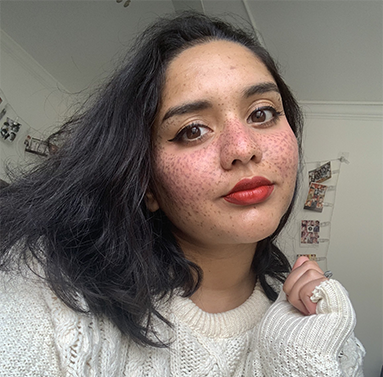
What is your role at Scripps?
I am a second-year MS marine biology student and I am working with Dr. Eric Archer from NOAA Southwest Fisheries Science Center on modeling dolphin group size patchiness in the Eastern Tropical Pacific.
What does Pride Month mean to you? Do you do anything special to celebrate this month?
This is going to be my first Pride Month that I can actually openly celebrate! My goal this June is to celebrate in small ways and to enjoy the things I take for granted. I have a wonderful queer community that I’ve found in San Diego and I’m so excited to celebrate having a place where I feel like I belong.
What advice do you have for the next generation of LGBTQ+ scientists, or those who are still discovering their identity?
Self-doubt and insecurity are the biggest hurdles to anything, be it discovering your identity or furthering your career in the sciences. In those moments, it can be very difficult to ask for help or allow yourself to be cared for by the people around you; but I promise that there are people there who love and will be there for you, don’t push them away.
How can people and leadership at Scripps support the queer community?
Queer people, like every minority group, are not a monolith; and especially now it is imperative that we center queer voices, specifically BIPOC, immigrant and transgender people within the queer community. While leadership should continue pushing for more representation, as individuals, it is extremely important that the onus of combating homophobia and transphobia doesn’t just fall on the queer community. Now more than ever, we need the support of our allies in a political climate that makes it harder and harder for us to just exist as who we are.
Gilbert Bretado, Lead Graduate Student Affairs Advisor, He/Him/His
How do you identify? How has your identity informed or impacted your career?
I identify as a gay man. In terms of career, academia is generally very supportive of the LGBT community. Currently, my position allows me to work with the students in Queer@Scripps. Everyone from my bosses (Josh Reeves and Denise Darling) to the director of Scripps are incredibly supportive of our efforts.
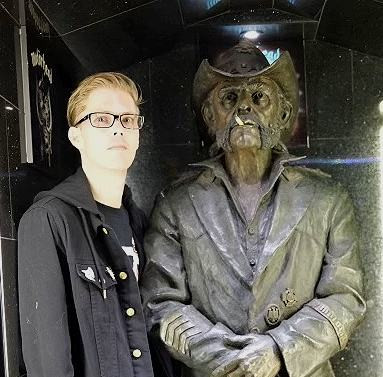
What is your role at Scripps?
I am one of the graduate coordinators, primarily working with PhD and MS students. I also serve as the community advisor for Queer@Scripps, although the student organizers do most of the work.
What does Pride Month mean to you? Do you do anything special to celebrate this month?
Pride Month is definitely a time for celebration and is incredibly empowering. But it's also a reminder that life continues the other 11 months of the year. It’s important to stay engaged and connected all year long. This year I will be going to Pride with a couple family members.
What advice do you have for the next generation of LGBTQ+ scientists, or those who are still discovering their identity?
Two pieces of advice that aren’t mutually exclusive. Be true to who you are and not who you think your identity dictates you should be. But don’t be so resolute that you keep yourself from new experiences and opportunities to build community. As an old punk rocker, who much prefers loud music in dive bars, I’m still reminding myself about the new experiences piece of advice.
How can people and leadership at Scripps support the queer community?
Donate to Queer@Scripps. Send a student to Pride. Support a future event. Help remove the biggest barrier a student org faces.
Orion McCarthy, PhD student in Marine Biology, He/Him/His
How do you identify? How has your identity informed or impacted your career?
I identify as a gay cisgender man. Growing up, this component of my identity usually took a backseat to other things, such as my love for nature or my interest in science. It took time for me to learn to love that part of myself, and now I place my queer identity on the same level as those other aspects of my personality that are very important to me. I think having more queer role models within the sciences would have helped me make this transition sooner.
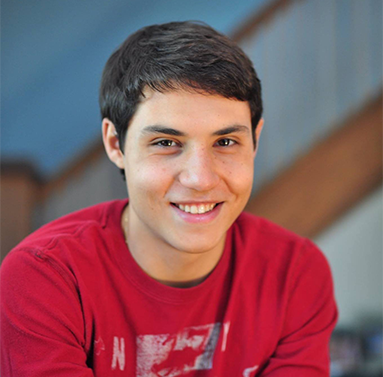
What is your role at Scripps?
I am a fourth-year PhD student in Dr. Jen Smith’s lab. My research focuses on studying how coral reefs change over time in response to disturbance events. Specifically, I am using 3D models of coral reefs to evaluate reef conservation efforts in Hawaii. Our lab has dozens of coral reef monitoring sites throughout the region, including some that we’ve been visiting annually since 2014 on the island of Maui. In that time, we’ve documented two bleaching events, but also evidence of reef recovery. I’m using this time series to evaluate the recovery trajectory of these reefs using metrics derived from our 3D models. By comparing our findings to more traditional assessments of reef condition in Maui, we can determine the utility of 3D models for reef conservation.
What does Pride Month mean to you? Do you do anything special to celebrate this month?
Pride Month is always an interesting time of year for me. I personally don’t gravitate toward the pageantry and flamboyance that can characterize Pride parades and festivities, and in the past, this disconnect made it hard for me to get in the spirit of Pride Month. However, in seeing how much others in the community value those things, I’ve come to appreciate Pride Month as a forum for expression, visibility, and joy for so many people. I view this month as a both a time to reflect on the sacrifices made by the generations before us who fought for equality, as well as an occasion to celebrate the diversity of the queer community that exists today. Even if I don’t personally feel like I fit in at the parade, I’m really happy that the forum exists for others in the community that benefit from the opportunity to express themselves and find community.
What advice do you have for the next generation of LGBTQ+ scientists, or those who are still discovering their identity?
Just to be yourself, and to lean into that aspect of your identity as much or as little as you want to. If you want to highlight your sexuality and identity in all aspects of your research and professional life, then go for it! If you want to be more private or don’t feel like your sexuality is a big part of your identity, that’s ok too. People are multifaceted and there is no single “correct” way to be a queer scientist. The most important thing is that people are given the space to feel comfortable being themselves, whatever that means for each individual person. Because when people feel comfortable enough to present their genuine selves, that leads to a more diverse and inclusive space for all of us to conduct our science.
How can people and leadership at Scripps support the queer community?
Following from my previous answer, since there isn’t a single “correct” way to be a queer scientist, the larger Scripps community should understand that there exists a diversity of perspectives, identities, and lived experiences within the queer community. I also already mentioned that it would’ve been helpful to have more queer role models as a young scientist. The Scripps community can help foster a pipeline for future role models by creating space where queer scientists feel comfortable being their authentic selves. To create this space, Scripps should provide training on micro/macro aggressions, ensure access to gender neutral bathrooms, support community-building initiatives like Queer@Scripps, and actively recruit queer faculty, among other actions.
Lydi Keppler, Postdoctoral Scholar, She/Her
How do you identify? How has your identity informed or impacted your career?
I’m a cisgender queer woman. I grew up extremely religious (a Christian fundamentalist sub-branch) and was raised not to believe in the scientific method. As a teenager, I realized I was queer. While I was taught that being queer was sinful, I could not change my identity, which made me question my faith. Long story short, I found that the religion that I was raised to believe in did not make sense to me anymore (not only because of this paradox). I always loved the ocean, and so after some detours of traveling and soul-searching, I found that I really wanted to study marine science. I wonder if I was not queer if I would have left my parent’s religion and opened up to science. But I know that my coming out helped me on this journey!
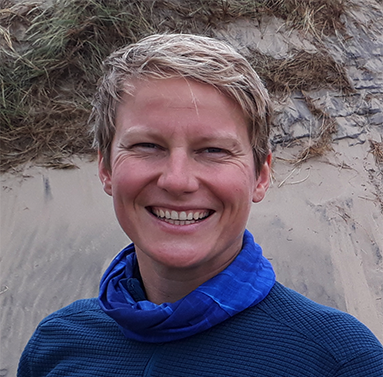
What is your role at Scripps?
I’m a postdoc working on the Southern Ocean Carbon and Climate Observations and Modeling project (SOCCOM). I’m researching the role of mesoscale eddies on the Southern Ocean carbon sink using both observations and data assimilation.
What does Pride Month mean to you? Do you do anything special to celebrate this month?
Pride Month is a time to celebrate our amazing selves and be proud of who we are. We are a beautiful and colorful community and have come a long way. In a dream world, diversity of gender and sexuality (and other forms of diversity!) would be normalized and just part of life that wouldn’t need a special day or month. But as we do not live in that dream world, Pride Month is also an important time; it’s where we can reflect and remind ourselves and the people outside of our community that we still have a long road ahead to equality and that the rights that we fought for are not granted to be in place forever. I haven’t made plans for Pride Month yet, but I will definitely check out what events are happening around town!
What advice do you have for the next generation of LGBTQ+ scientists or those who are still discovering their identity?
You are a beautiful shining star, and you belong here just as you are. Reach out to other LGBTIQ+ people and our allies and learn about the stories of people that might have similar experiences as you. There is a Queer@Scripps group; get in touch if you want to get added to our mailing list! We meet for discussions and lunches in person and on Zoom, and it’s a safe and welcoming space.
How can people and leadership at Scripps support the queer community?
Leadership: Hire queer people at all career stages, pay people well so that marginalized groups can afford to be here, and make queer people feel welcome (the same applies to people from other historically marginalized groups). More gender-inclusive bathrooms would also be an important next step. People at all career stages should receive mandatory training in DEI that includes gender and sexuality.
Everyone: Use the pronouns and names that people introduce themselves with, ask when unsure, and use inclusive language! Another very practical thing everyone can do is micro affections, i.e., small conscious acts of kindness that might offset some of the micro (and macro) aggressions that queer and marginalized people face.
Fiamma Straneo, Professor of Oceans and Climate, She/Her
How do you identify? How has your identity informed or impacted your career?
I identify as a gay woman. As an academic, I am fully aware that I have enjoyed greater support than many others in the LGBTQ+ community in the workplace. While the road has not always been easy, it has been easier than for many others. Still, my partner and I have always carefully scrutinized places (including workplaces, cities, states where we have lived or spent time) for their recognition and protection of LGBTQ+ rights. It is not by chance that we have chosen states like Washington, Massachusetts and California as our home over the years. This became even more important once we became a family (two kids). Like for many LGBTQ+ families, we have had to fight (often by hiring lawyers) to enjoy rights and legal protection that is automatic for heterosexual couples. This takes time, energy and money and can, at times, be very frustrating. I am eternally grateful to the many people that have supported us throughout the process.
As a scientist I have had the pleasure to mentor and/or work with many amazing LGBTQ+ scientists and to share experiences (including of doing fieldwork) with many others in my field whom I have met along the way. This community has been key in supporting and enriching my career.
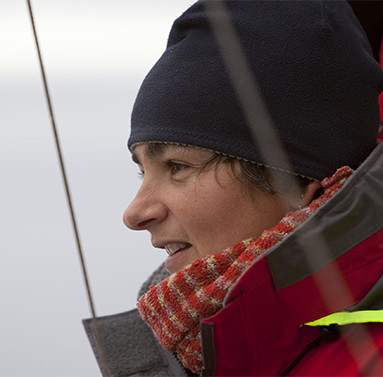
What is your role at Scripps?
I am a professor of oceans and climate whose research focuses on the polar regions, and I am also co-director of the Scripps Polar Center. I teach and mentor graduate and undergraduate students. I am also a sea-going oceanographer and have been doing fieldwork in the Arctic and Subarctic region for over two decades.
What does Pride Month mean to you? Do you do anything special to celebrate this month?
It is a time to celebrate the many inspiring people, worldwide, who have fought or are presently fighting for LGBTQ+ rights. My family, two women and our two children, owe much to them. We have been celebrating Pride for many years, usually in parades wherever we have found ourselves, at times with signs, at times with strollers.
What advice do you have for the next generation of LGBTQ+ scientists, or those who are still discovering their identity?
To be proud of who you are and to recognize that you contribute a unique, valuable and enriching perspective to science and anything you engage in.
How can people and leadership at Scripps support the queer community?
By recognizing, celebrating and supporting diversity via hires and admissions throughout the entire Scripps community (including students, faculty and staff). Examples include access to resources including legal ones, funding for events (not just mentoring and educational but also celebratory ones), and facilitating mentorship.